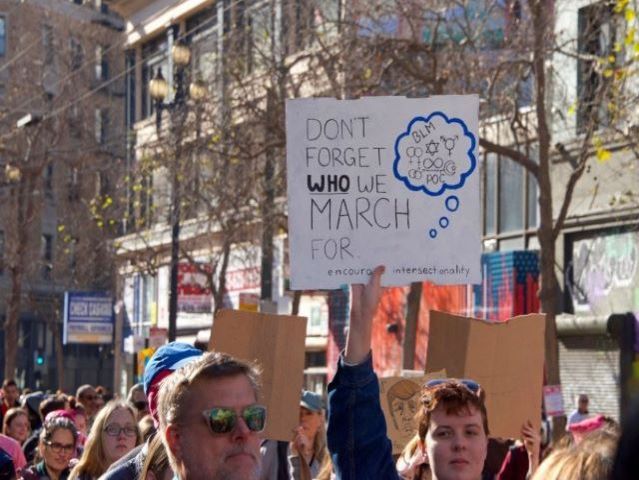Single-Target Diversity: How Inclusion Efforts Can Fail

Diversity and inclusion initiatives are being designed and implemented by organizations more than ever before. However, many of these initiatives do not work, or oftentimes only work in very limited contexts (Kalev & Dobbin, 2018). The way how interventions are approaching marginalized groups, particularly in how social groups are “singled-out”, may be contributing to this ineffectiveness.
Diversity and inclusion initiatives often focus on just one characteristic to target the people they want to include, for example, gender, race/ethnicity, or (mental or physical) disability. Doing this lumps people together into one seemingly homogenous group, without considering how multiple social group experiences interact to fully create someone’s experience of marginalization. With this “single-target” approach, we run the risk of exclusively considering and treating prototypical members of these social groups, while non-prototypical group members — who often are members of multiple marginalized social groups— are not fully included in these inclusion efforts.
For example, a company initiative may wish to promote the inclusion and representation of women (e.g., via Women’s Empowerment Program). If we consider that women can consist of many ethnic groups of women, one can imagine how different subgroups in this ‘female category’ may more likely be confronted with certain challenges over others. Our perceptions of the challenges and experiences for a single social group become more complex and richer when considering multiple social subgroups.
Take for instance, the general stereotype around women on how they are relationship-oriented, nurturing, and kind, whereas men are assertive, bold, and aggressive (Haines, Deaux, & Lofaro, 2016). Because of this stereotype, women are frequently penalized for acting against these stereotypes or acting “too manly”. Yet, considering ethnic group differences among women show that this is not exactly the case for all women. Black women who act more assertively may not necessarily experience a penalty to the same degree, because of how Black women are often characterized as strong, domineering, and self-reliant (Rosette, de Leon, Koval, & Harrison, 2018). Contrastingly, Asian women are often stereotyped as passive, submissive, and fragile. Consequently, Asian women are especially susceptible to backlash when they act dominantly. Examining the experiences of women by ethnicity reveal various challenges through the interaction of race and gender. Black women may more likely struggle with how they wear their hair and the perceptions attached to those decisions. Asian women may — without corresponding rewards — more likely may face disproportionate pressure to perform to very high standards due to the model-minority myth.
If we only considered “women”, differences within this group are likely overlooked. Addressing a single dimension of diversity often sets an implicit standard. When we focus just on “women”, we risk designing interventions where that standard excludes, for instance, the racialized gender experiences of many Black and Asian women. Therefore, it is less likely that their experiences come to mind to incorporate them in inclusion efforts, resulting in reduced effectiveness of the intervention. This example of gender diversity interventions is not unique, and applies for any effort that aims to include a marginalized group.
So how should we approach this problem? Here are some ways to introduce complexity when making inclusive efforts in your workplace:
- Any organizational inclusivity effort should involve a monitoring and evaluation plan to check if the goals of the effort are being met.
- In monitoring and evaluation plans or personnel records, try to disaggregate the employee data by other “vulnerable” social statuses (e.g., ethnicity and gender, socioeconomic status and disability). This may reveal disparities at various intersections that were previously not thought of.
- Apart from collecting quantitative data, try to set regular and anonymous interviews to "check in" with employees and how they feel in their work environment. These accounts from interview data are often very rich and highlight the complexities of marginalized peoples’ experiences.
- When designing an inclusive effort, involve an “expert group” made up of diverse members of the marginalized group that you are targeting. Get their input of what would be successful for them, or successful for people like them.
Edwina Wong (c.y.e.wong rug.nl) is a PhD candidate at the RUG Department of Human Resource Management and Organizational Behavior. With a training in Social and Organizational Psychology, her PhD research is on making workplace gender diversity interventions considerate of women of color.
References:
Dobbin, F., & Kalev, A. (2018). Why Doesn’t Diversity Training Work? The Challenge for Industry and Academia. Anthropology Now, 10(2), 48–55.
Haines, E. L., Deaux, K., & Lofaro, N. (2016). The times they are a-changing . . . or are they not? A comparison of gender stereotypes,1983–2014. Psychology of Women Quarterly, 40, 353- 363.
Rosette, A. S., Ponce de Leon, R., Koval, C. Z., & Harrison, D. A. (2018). Intersectionality: Connecting experiences of gender with race at work. Research in Organizational Behavior, 38, 1–22.


